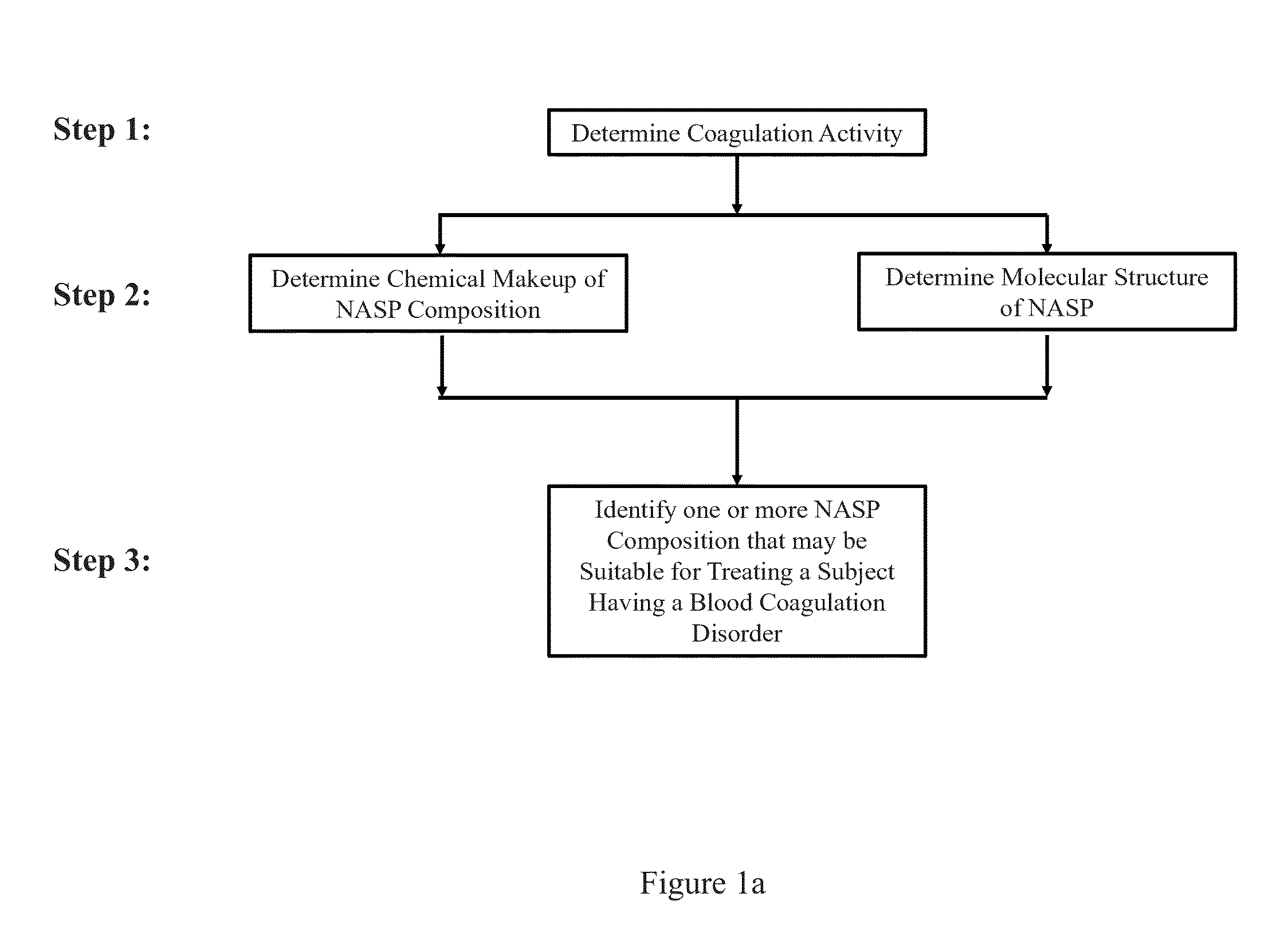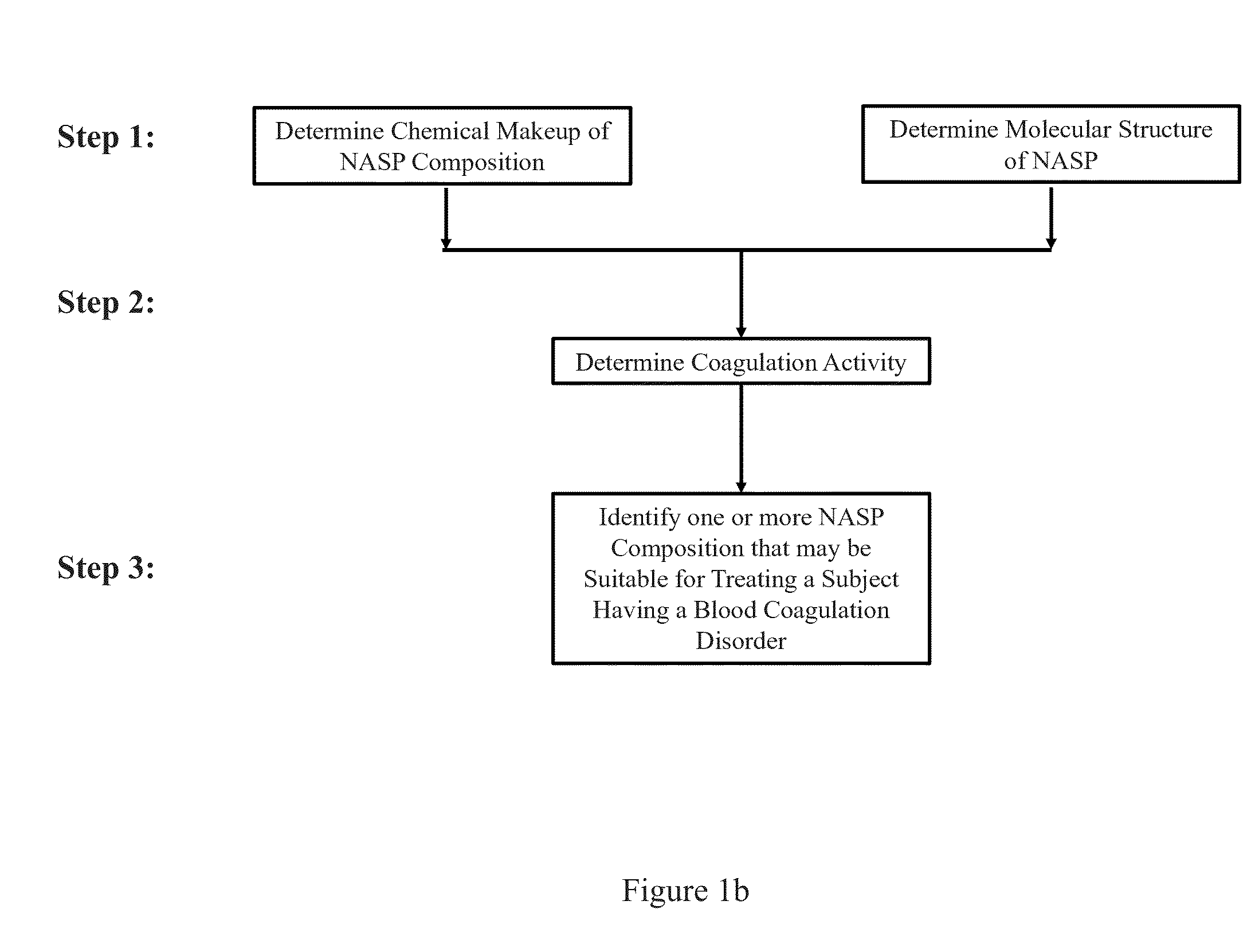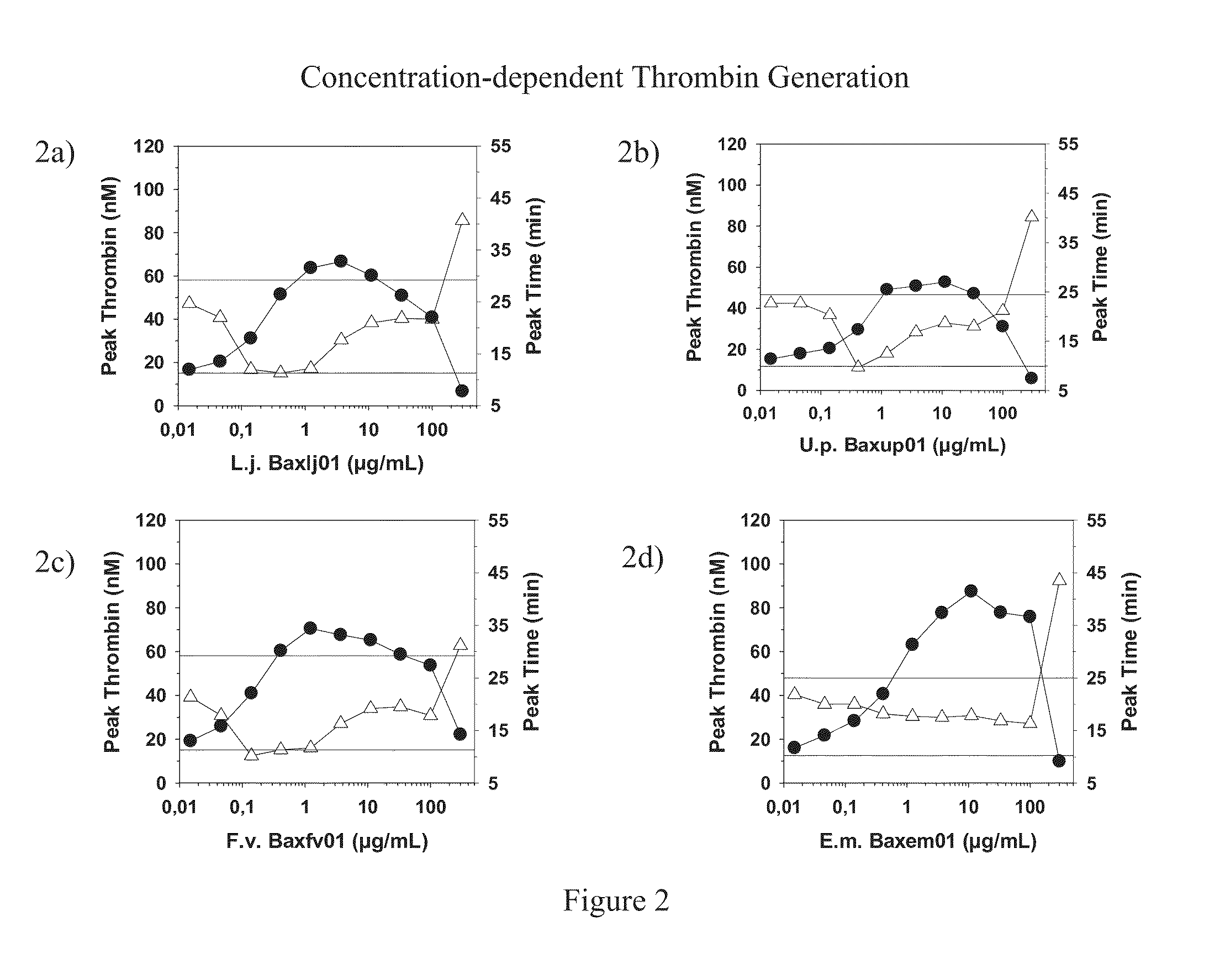Methods and systems for screening compositions comprising non-anticoagulant sulfated polysaccharides
a technology of non-anticoagulant sulfated polysaccharides and screening compositions, which is applied in the field of methods and systems for screening compositions comprising non-anticoagulant sulfated polysaccharides, can solve the problems of localized bleeding and further complicated, and achieve the effect of increasing the time for blood plasma clotting
- Summary
- Abstract
- Description
- Claims
- Application Information
AI Technical Summary
Benefits of technology
Problems solved by technology
Method used
Image
Examples
example 1
Coagulation Activity
[0209]Biological activity was tested using fucoidan candidates to determine suitable candidates for the development of a new treatment for subjects with blood coagulation disorders. Fucoidans exhibit procoagulant activity by inhibiting TFPI and by accelerating thrombin-dependent FVa formation. The fucoidans tested exhibited inhibition of full-length TFPI. Fucoidans also demonstrated some anticoagulant activity. Potentiation of the thrombin inhibitors antithrombin III and / or heparin cofactor II have been described as one anticoagulant mechanism. Contact system activation and subsequent generation of bradykinin, was also observed in some fucoidans. The procoagulant window of the fucoidans tested were within the concentration range of four magnitudes (˜0.1-100 μg / mL, as depicted in FIG. 2). Furthermore, these fucoidans increase thrombin generation in normal plasma, demonstrating procoagulant activity independent of hemophilic factors. In order to select the NASP can...
example 2
Molecular Structure
[0229]A comparison of molecular structure of the tested fucoidans was also conducted. Three lots of F.v. fucoidan were characterized for product consistency.
Agarose Gel
[0230]Electrophoresis was used to compare fucoidans. In this work, agarose gels were applied to the tested fucoidans. (FIG. 8) The various species were distinguished by the migration of the fucoidans on the agarose gel, and the three lots appear similar on the gel, implying good lot-to-lot manufacturing reproducibility. The purity, molecular size-to-charge ratio, and affinity to barium are all properties that determine the migration of a sample in the gel. The gel for analysis of different fucoidans is shown in FIG. 8. The fucoidans from different sources were easily distinguished and the consistent performance of F.v. fucoidan lots on the gel was also confirmed.
Polyacrylamide Gel Electrophoresis (PAGE)
[0231]Different fucoidan lots were analyzed by polyacrylamide gel electrophoresis and their molecu...
example 3
Chemical Makeup
[0247]The sulfur content was also used to characterize the tested fucoidans. L.j and E.m showed low sulfur content, but the quantitated low sulfur contents were partially affected by high alginate content, and thus, may not entirely be an indication of low sulfur contents in the fucoidans. For example, the sulfur content of L.j. fucoidan was adjusted from 5.8 to 8.5 wt % after alginate was excluded (other adjusted S % were shown in Table 5).
[0248]Impurities in NASP composition may affect NASP coagulation activity, increase the possibility of toxicity, and impact quality control in the processing. Thus, organic and inorganic impurities were analyzed.
[0249]Non-NASP polysaccharides are co-extracted with fucoidans in brown seaweed, such as alginate and laminaran. Alginate is composed of mannuronic and guluronic acid with 1-4 linkage and is neither pro- nor anti-coagulant in the concentration range relevant to the tested fucoidans. The carbonyl groups from alginate observe...
PUM
| Property | Measurement | Unit |
|---|---|---|
| Fraction | aaaaa | aaaaa |
| Fraction | aaaaa | aaaaa |
| Fraction | aaaaa | aaaaa |
Abstract
Description
Claims
Application Information
 Login to View More
Login to View More - R&D
- Intellectual Property
- Life Sciences
- Materials
- Tech Scout
- Unparalleled Data Quality
- Higher Quality Content
- 60% Fewer Hallucinations
Browse by: Latest US Patents, China's latest patents, Technical Efficacy Thesaurus, Application Domain, Technology Topic, Popular Technical Reports.
© 2025 PatSnap. All rights reserved.Legal|Privacy policy|Modern Slavery Act Transparency Statement|Sitemap|About US| Contact US: help@patsnap.com



